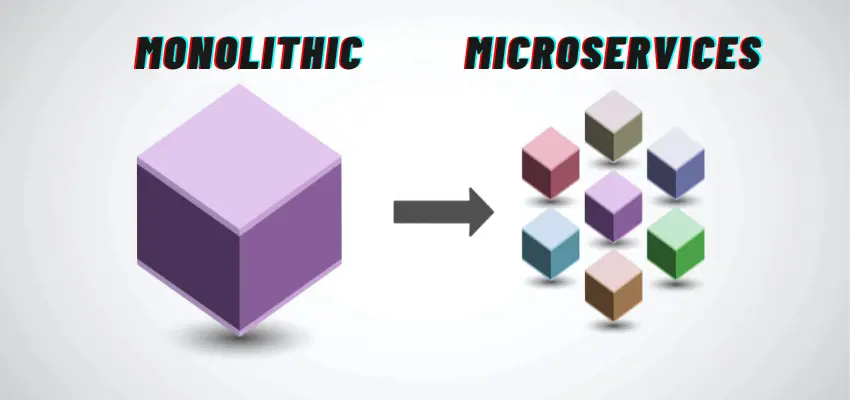When monolithic systems get too big, switching to microservices might be the way forward.
A monolithic application is built as one big unit. In contrast, a microservices architecture breaks things down into smaller, independently deployable services. Which one is better? Well, it depends on your needs.
How Netflix Made the Switch
Back in 2009, Netflix had a problem. Its system couldn’t keep up with the growing demand for streaming. The solution? Move from a monolithic setup to a microservices approach and shift everything to the cloud.
At the time, the term “microservices” wasn’t even a thing. But Netflix pulled it off, becoming one of the first big companies to make the transition. By 2015, it had over a thousand microservices, letting engineers push updates thousands of times a day.
Today, many companies follow the same path, moving away from monoliths toward microservices.

A monolithic system is a traditional software model where everything is packed into a single, self-contained unit. The term “monolith” itself suggests something massive, which makes sense. This type of setup has one large codebase that ties all business logic together.
The downside? Changing or updating anything means modifying the entire system. This makes updates slow and complicated.
Despite the challenges, monolithic architectures have their perks, especially in the early stages of a project:
- Simple deployment – Everything is in one place, making it easy to roll out updates.
- Faster development – With a single codebase, it’s easier to manage.
- Better performance – A centralized system can handle tasks efficiently.
- Easier testing – Since everything is together, testing the whole system is quicker.
- Straightforward debugging – Tracking down issues is simpler when all the code is in one place.
As a company grows, monolithic systems can become a bottleneck. Some common issues include:
- Slower development – The bigger the system, the harder it is to update.
- Scalability issues – You can’t scale individual components.
- Risky reliability – A single bug can bring down the whole application.
- Technology limitations – Changing one part often means updating the whole system.
- Deployment headaches – Even a small tweak requires redeploying the entire application.
Microservices break a big application into smaller, independent services. Each service has its own logic, database, and deployment process.
This doesn’t make software less complex; it just makes that complexity easier to manage. Microservices work well with DevOps, supporting continuous updates without major disruptions. Leveraging the right DevOps tools is essential to efficiently implement microservices and streamline deployment. From CI/CD pipelines to infrastructure as code, the right set of tools can significantly enhance automation and scalability.
Atlassian switched in 2018 when it faced challenges with Jira and Confluence. Their monolithic setup couldn’t scale, so they moved to Amazon Web Services (AWS) and started breaking things into microservices.
The process took two years and involved migrating over 100,000 customers in just 10 months all without service interruptions.
Microservices solve several problems for growing businesses:
- Agility – Small teams can work on different services independently.
- Flexible scaling – If one service gets overloaded, you can scale just that part.
- Continuous deployment – Frequent updates without downtime.
- Easier maintenance – Teams can roll back updates without affecting the entire system.
- Independent deployment – Features can be added or fixed without touching the rest of the application.
- Tech flexibility – Teams can use different tools for different services.
- Better reliability – A failure in one microservice doesn’t crash the whole app.
That said, microservices come with their own set of problems:
- Development sprawl – Managing many small services can get messy.
- Higher infrastructure costs – More services mean more expenses.
- Added complexity – Debugging across multiple services is tricky.
- Lack of standardization – Different teams might use different tools and practices.
Unclear ownership – With so many services, keeping track of who owns what can be a challenge.
Thinking About Switching? Here’s What to Consider
Many companies start with a monolithic setup and shift to microservices as they grow. If you’re considering a transition, here are some tips:
1. Plan Your Migration
Atlassian carefully mapped out its transition strategy. They knew different customers would have different needs, so they planned every step.
2. Invest in the Right Tools
Before migrating, they built internal tools to track microservices, ensure quality checks, and monitor performance. Automation played a big role in making the shift smooth.
3. Set Realistic Expectations
Major changes take time. A strong leadership team is key to making the transition successful. Companies need to invest in new tools, systems, and processes to make microservices work.
Final Thoughts
There’s no one-size-fits-all answer. Monolithic architectures work well for small teams and simple applications, while microservices help large, growing companies scale efficiently.
If you’re experiencing slow development, frequent downtime, or scalability issues, it might be time to consider microservices. But before making the jump, make sure you’re ready for the added complexity that comes with them.